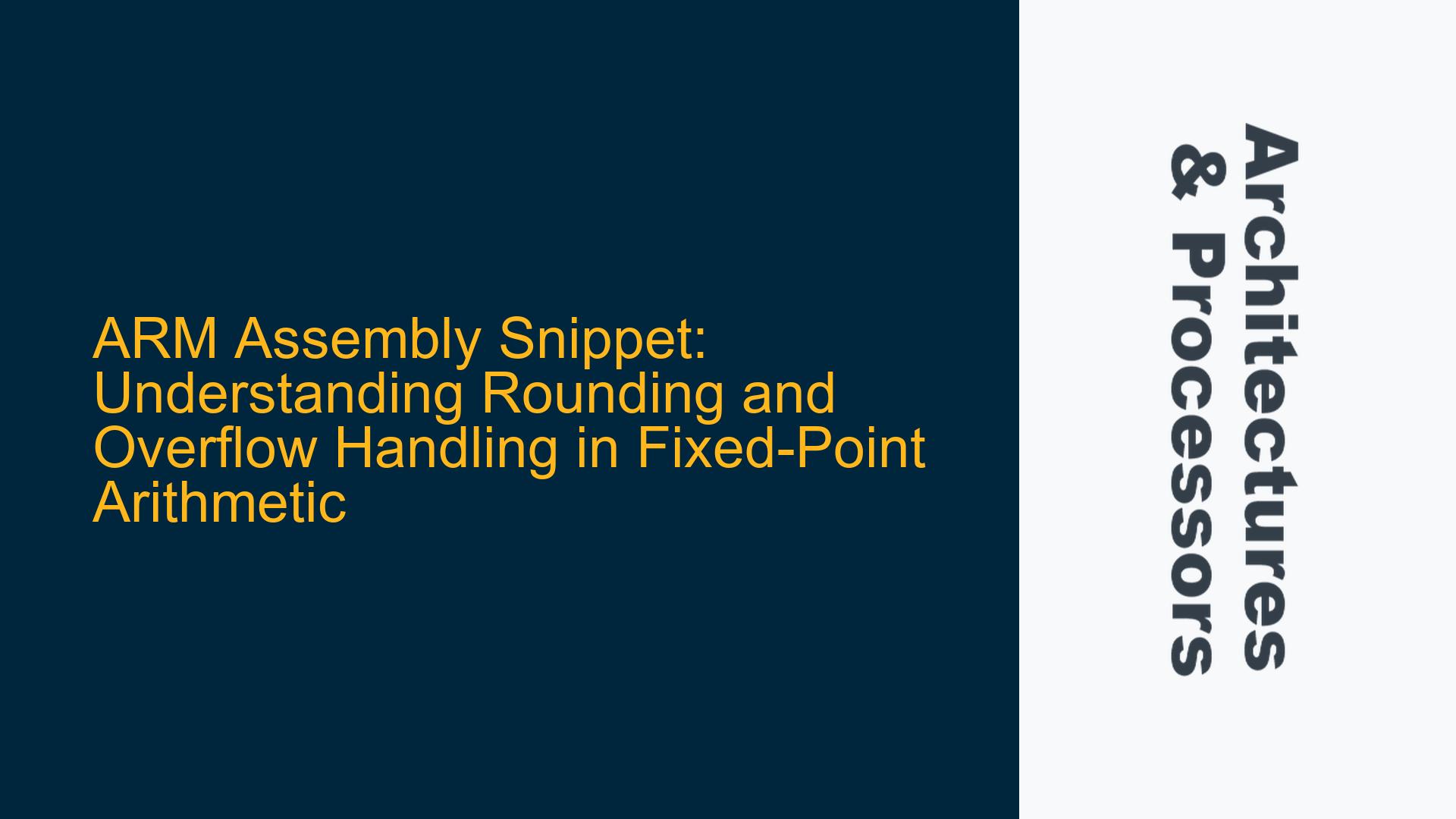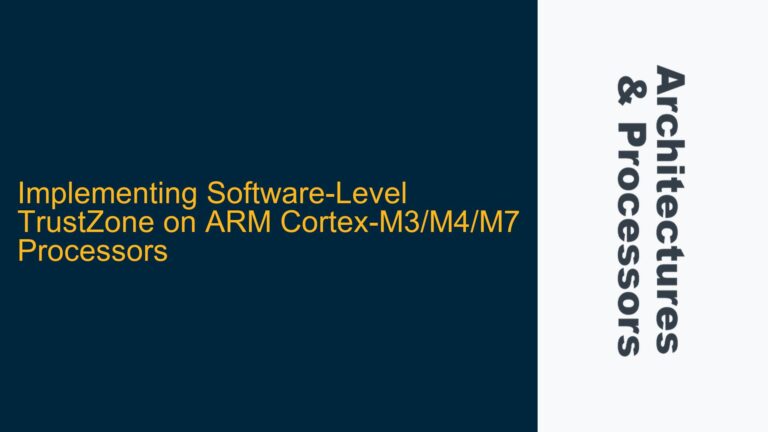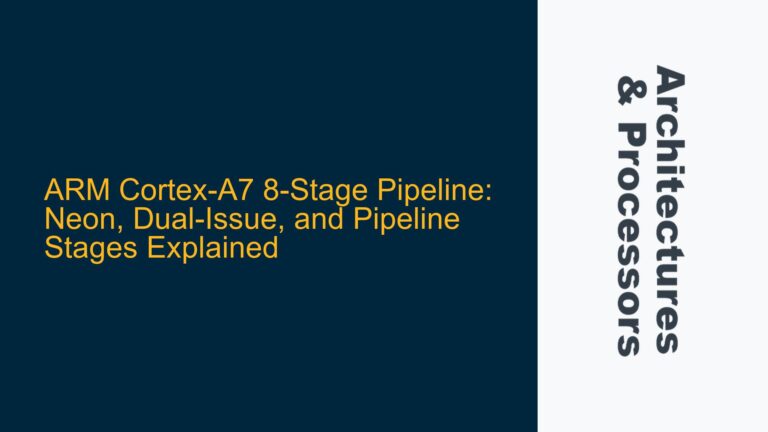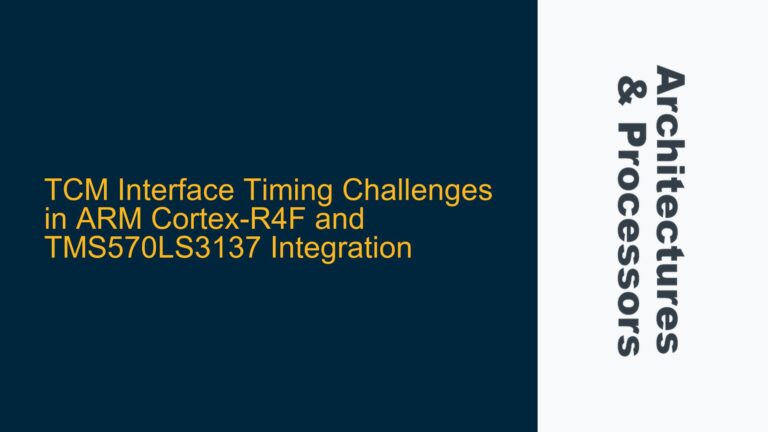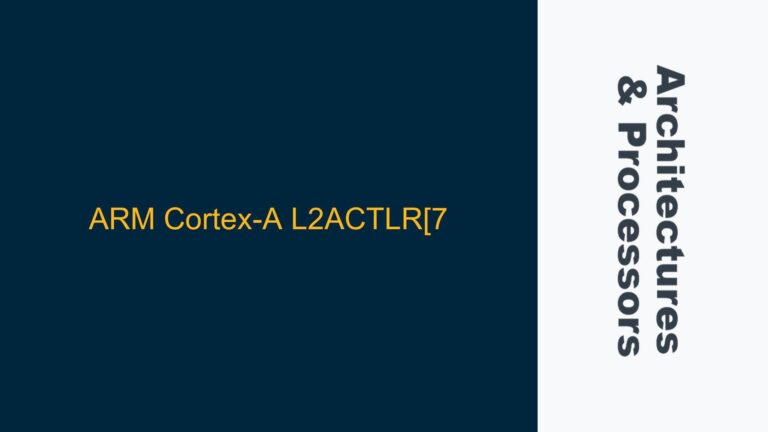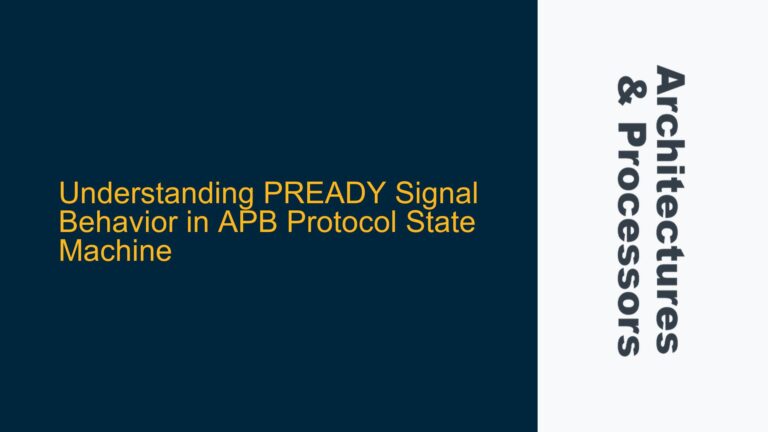ARM Cortex-M4 Fixed-Point Arithmetic and Rounding Mechanism
The provided assembly snippet demonstrates a common pattern used in ARM Cortex-M4 processors for handling fixed-point arithmetic, specifically focusing on rounding and overflow management. The snippet is as follows:
add.w r1, r4, r5
add.w r1, r1, r1, lsr #0x1f
asr r1, r1, #1
This sequence of instructions is designed to perform a signed addition of two values stored in registers r4 and r5, followed by a rounding operation and a division by 2. The key to understanding this snippet lies in the second add.w instruction, which incorporates a logical shift right (LSR) operation. This operation is used to handle potential overflow and ensure proper rounding of the result.
Fixed-Point Arithmetic Context
Fixed-point arithmetic is a method of representing fractional numbers using integers. In this representation, a number is scaled by a fixed factor, often a power of two, to allow for fractional precision. For example, a 32-bit integer might represent a fixed-point number with 16 bits for the integer part and 16 bits for the fractional part. This scaling factor is crucial for understanding the rounding mechanism in the provided assembly snippet.
The Role of the Second add.w Instruction
The second add.w instruction is critical for handling overflow and ensuring correct rounding. The instruction add.w r1, r1, r1, lsr #0x1f can be broken down as follows:
r1is the result of the first addition (r4 + r5).r1, lsr #0x1fperforms a logical shift right ofr1by 31 bits. This operation effectively extracts the sign bit ofr1. Ifr1is negative, the result of the shift will be1; ifr1is positive or zero, the result will be0.- The addition
r1 + (r1 >> 31)adjustsr1by adding the sign bit to itself. This adjustment is used to handle the rounding of the result when dividing by 2.
The Arithmetic Shift Right (ASR) Instruction
The final instruction, asr r1, r1, #1, performs an arithmetic shift right by 1 bit. This operation is equivalent to dividing the value in r1 by 2, but with proper handling of the sign bit. The ASR instruction ensures that the sign of the result is preserved, which is essential for signed arithmetic.
Mathematical Interpretation
The sequence of operations can be interpreted mathematically as follows:
- First Addition:
r1 = r4 + r5 - Rounding Adjustment:
r1 = r1 + (r1 >> 31) - Division by 2:
r1 = r1 / 2
The rounding adjustment ensures that when r1 is negative, the result is rounded towards negative infinity, and when r1 is positive, the result is rounded towards zero. This behavior is consistent with the rounding rules for signed division in fixed-point arithmetic.
Potential Overflow and Rounding Errors in Fixed-Point Arithmetic
Overflow in Fixed-Point Addition
One of the primary concerns in fixed-point arithmetic is the potential for overflow during addition. When two fixed-point numbers are added, the result may exceed the range that can be represented by the fixed-point format. In the provided assembly snippet, the first add.w instruction (add.w r1, r4, r5) performs the addition of r4 and r5. If the sum of r4 and r5 exceeds the maximum value that can be represented in the fixed-point format, an overflow will occur.
Rounding Errors in Fixed-Point Division
Another concern in fixed-point arithmetic is the potential for rounding errors during division. When a fixed-point number is divided by 2, the result may not be representable exactly in the fixed-point format, leading to a rounding error. The rounding mechanism in the provided assembly snippet is designed to minimize this error by adjusting the result based on the sign of the value before performing the division.
The Role of the Sign Bit in Rounding
The sign bit plays a crucial role in the rounding mechanism. In the second add.w instruction, the sign bit of r1 is extracted using a logical shift right by 31 bits (r1, lsr #0x1f). This operation yields 1 if r1 is negative and 0 if r1 is positive or zero. The sign bit is then added to r1 to adjust the result before the division by 2. This adjustment ensures that the rounding is consistent with the rules for signed division, where negative numbers are rounded towards negative infinity and positive numbers are rounded towards zero.
Impact of Rounding on Fixed-Point Precision
The rounding mechanism in the provided assembly snippet has a direct impact on the precision of the fixed-point result. By adjusting the result based on the sign bit, the rounding mechanism ensures that the result is as close as possible to the true value of the division. However, this adjustment introduces a small error, known as the rounding error, which is inherent in fixed-point arithmetic. The magnitude of this error depends on the specific fixed-point format and the values being processed.
Implementing Fixed-Point Arithmetic with Proper Rounding and Overflow Handling
Step 1: Perform the Initial Addition
The first step in the sequence is to perform the addition of the two fixed-point values stored in r4 and r5. This is done using the add.w instruction:
add.w r1, r4, r5
This instruction adds the contents of r4 and r5 and stores the result in r1. It is important to note that this addition may result in an overflow if the sum of r4 and r5 exceeds the maximum value that can be represented in the fixed-point format.
Step 2: Adjust for Rounding Based on the Sign Bit
The second step is to adjust the result of the addition based on the sign bit of r1. This adjustment is necessary to ensure proper rounding when the result is divided by 2. The adjustment is performed using the following instruction:
add.w r1, r1, r1, lsr #0x1f
This instruction adds the sign bit of r1 (extracted using a logical shift right by 31 bits) to r1 itself. The effect of this operation is to increment r1 by 1 if it is negative, which ensures that the result is rounded towards negative infinity when divided by 2.
Step 3: Perform the Division by 2 with Proper Sign Handling
The final step is to divide the adjusted result by 2 using an arithmetic shift right (ASR) instruction:
asr r1, r1, #1
This instruction shifts the bits of r1 to the right by 1 position, effectively dividing the value by 2. The ASR instruction preserves the sign bit, ensuring that the result is correctly signed. This is crucial for maintaining the correct sign of the result in signed fixed-point arithmetic.
Example Calculation
To illustrate the sequence of operations, consider the following example:
- Let
r4 = 0x00000003(3 in decimal) - Let
r5 = 0x00000005(5 in decimal)
Step 1: Perform the Initial Addition
add.w r1, r4, r5
Result: r1 = 0x00000008 (8 in decimal)
Step 2: Adjust for Rounding Based on the Sign Bit
add.w r1, r1, r1, lsr #0x1f
Since r1 is positive, the sign bit is 0. Therefore, the result remains unchanged
